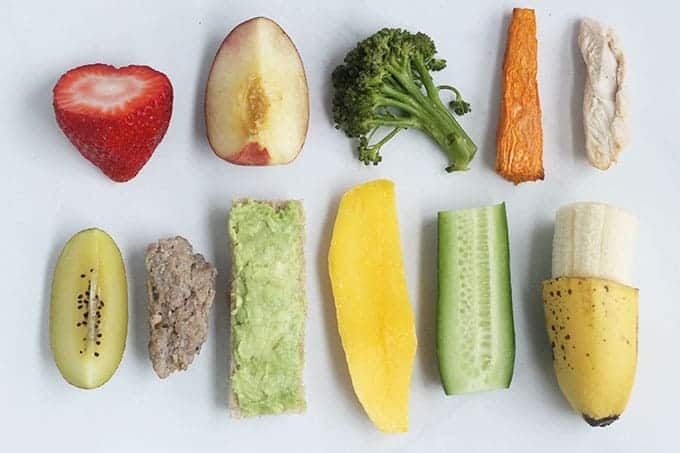A Comprehensive Guide to Baby-Led Weaning

Baby-led weaning (BLW) is an increasingly popular approach to introducing solid foods to infants. Unlike traditional weaning methods that rely on purees and spoon-feeding, BLW encourages babies to self-feed solid foods from the start. This guide provides an in-depth look at what baby-led weaning is, its benefits, how to start, safety tips, and frequently asked questions.
What is Baby-Led Weaning?
Definition
Baby led weaning is a method of introducing solid foods to babies by allowing them to feed themselves from the very beginning. Instead of purees and spoon-feeding, babies are offered a variety of whole foods that they can pick up and eat independently.
Principles of Baby-Led Weaning
- Self-Feeding: Babies are encouraged to explore and eat food on their own, using their hands.
- Family Meals: Babies eat the same foods as the rest of the family, promoting shared mealtime experiences.
- Developmental Readiness: BLW starts when babies show signs of readiness for solids, typically around six months old.
- Nutritional Variety: A wide range of foods is offered to ensure a balanced diet and to expose babies to different tastes and textures.
Benefits of Baby-Led Weaning
Promotes Healthy Eating Habits
- Self-Regulation: Babies learn to recognize their hunger and fullness cues, promoting healthy eating habits.
- Variety and Nutrition: Exposure to a variety of foods can lead to a more balanced and nutritious diet.
Enhances Developmental Skills
- Motor Skills: Picking up and handling food enhances fine motor skills and hand-eye coordination.
- Oral Development: Chewing different textures aids in oral development and strengthens jaw muscles.
Encourages Family Mealtime
- Social Interaction: Eating together fosters social interaction and helps babies learn from observing family members.
- Less Stress: BLW can reduce mealtime battles and stress for parents, as babies are given the autonomy to explore food at their own pace.
How to Start Baby-Led Weaning
Signs of Readiness
Before starting BLW, ensure your baby shows signs of readiness for solid foods:
- Sitting Up: Baby can sit up with minimal support.
- Good Head Control: Baby can hold their head steady.
- Interest in Food: Baby shows curiosity about what others are eating.
- Hand-to-Mouth Coordination: Baby can pick up objects and bring them to their mouth.
First Foods to Offer
Start with soft, easily manageable foods cut into stick or finger-sized pieces. Examples include:
- Vegetables: Steamed carrot sticks, broccoli florets, or sweet potato wedges.
- Fruits: Banana pieces, avocado slices, or soft pear chunks.
- Proteins: Cooked chicken strips, scrambled eggs, or fish without bones.
- Grains and Dairy: Toast fingers, soft cheese slices, or cooked pasta.
Introducing New Foods
- Variety: Offer a range of foods to expose your baby to different tastes and textures.
- One at a Time: Introduce new foods one at a time to monitor for any allergic reactions.
- Patience: Allow your baby time to explore and become familiar with new foods without pressure.
Safety Tips for Baby-Led Weaning
Preventing Choking
- Supervision: Always supervise your baby during meals.
- Appropriate Sizes: Cut food into manageable pieces to prevent choking.
- Avoid High-Risk Foods: Avoid foods that pose a choking hazard, such as whole grapes, nuts, and hard raw vegetables.
Creating a Safe Eating Environment
- High Chair: Ensure your baby sits in a high chair with good back support and safety straps.
- No Distractions: Minimize distractions during mealtime to help your baby focus on eating.
- Calm Atmosphere: Create a relaxed and positive eating environment.
Frequently Asked Questions
Is Baby-Led Weaning Safe?
Yes, when done correctly, BLW is safe. It’s important to supervise your baby, offer appropriate food sizes, and avoid choking hazards.
How Do I Know My Baby is Getting Enough to Eat?
Trust your baby’s ability to self-regulate. As long as they are offered a variety of nutritious foods and continue to breastfeed or formula-feed, they will get the nutrition they need.
Can I Combine BLW with Traditional Weaning?
Yes, many parents choose a mixed approach, offering both finger foods and purees. This flexibility can accommodate different situations and preferences.
What if My Baby Chokes?
It’s normal for babies to gag as they learn to handle different textures. Gagging is a natural reflex and different from choking. Educate yourself on the difference and know basic first aid to be prepared.
When Should I Start Offering Water?
Introduce a sippy cup of water around six months to help your baby learn to drink from a cup and stay hydrated.
Conclusion
Baby-led weaning is a rewarding and beneficial approach to introducing solid foods. By allowing babies to self-feed, BLW promotes healthy eating habits, enhances developmental skills, and encourages positive mealtime experiences. With the right preparation and safety measures, parents can confidently embark on this journey, fostering a lifelong love of food and independence in their little ones.







